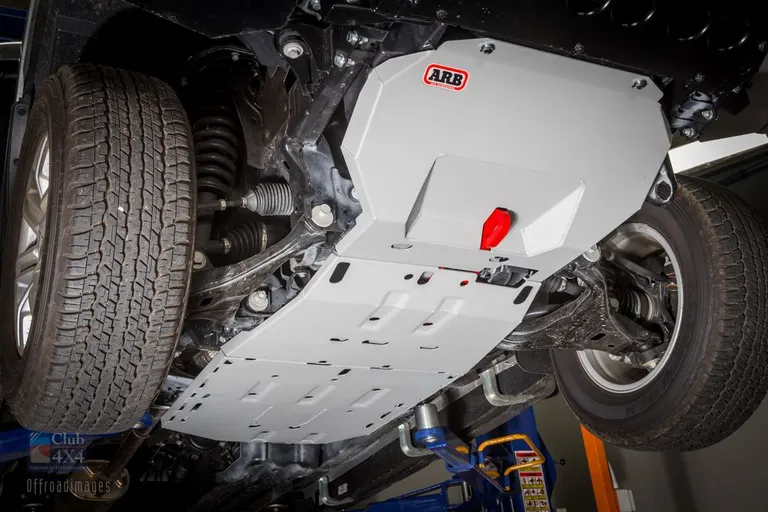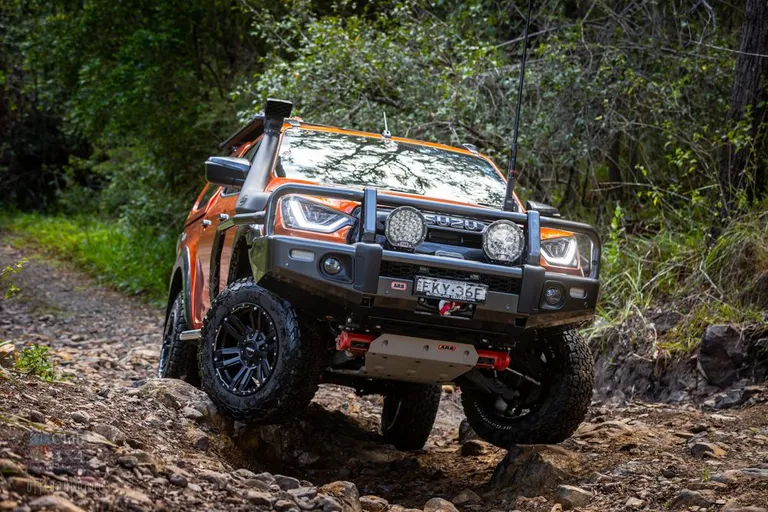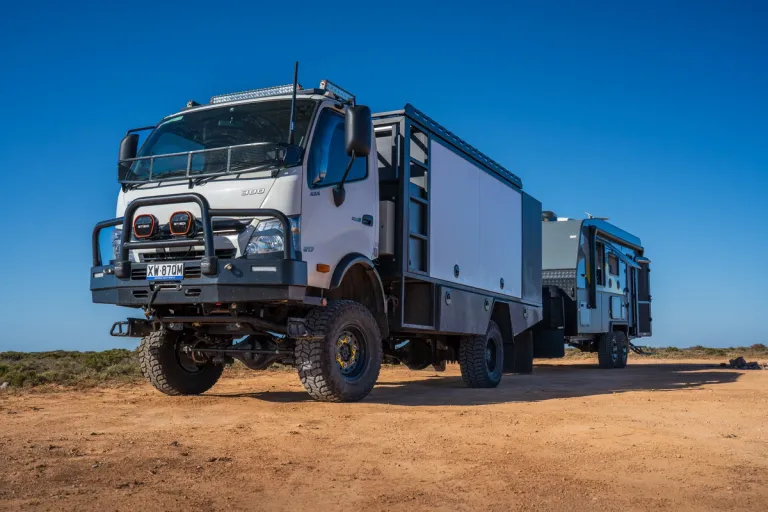Most people are aware of the benefits of a Bull Bar's ability to protect your vehicle from unintentional animal strikes, but what else can you do to help safeguard your vehicle's important components?
What is a UVP? It has a few different names but is generally referred to as "Underbody Vehicle Protection," or simply... a "Bash plate."

On most 4WD trips away, you will be traveling over uneven terrain and perhaps driving through areas of water, such as a river crossing or maybe even a section of mud known as a bog hole.

We are all extremely careful to ensure our vehicles are protected from scratches and dents, so we will do everything to avoid obstacles that we can see on the track. Branches sticking out, rocky outcrops will usually slow us down as we navigate around them. Unless our vehicle was a paddock basher, if we scratched the outside of the vehicle, we would most likely be devastated.
But what about the underside of the vehicle?

We will drive through a muddy hole and not have any idea what lies beneath the surface. You just can’t see the obstacles that might create havoc for the vehicle’s drivetrain.
Well, this might have already answered the question of “Do we need UVP?”

While a Bull bar protects the front end and most of the radiator from potential damage, the underside of the radiator, the engine sump, and transfer case are not always properly protected from a heavy hit by an obstacle while traveling through a rough section of the track.

The original equipment might have a lightweight steel protection panel covering some of the components, but they are usually just not adequate to do the job properly—the job of protecting your vehicle's vital assets of the drivetrain.

Imagine you are in a remote location, and you bump the bottom of your radiator, splitting it and rendering it useless for further travel without major repair work. Would you know what to do to fix it? Could it even be fixed remotely? This happened to us twice with two separate Nissan Navaras. On two separate trips, one of these vehicles contacted the bottom of a sand dune, and the other encountered a rut on the track, both pushing the radiator upwards, bending the upper retaining tabs, and forcing the radiator onto the fan, destroying the radiator. In both situations, we were faced with towing the vehicle out of the remote locations. A simple bash plate or UVP would have protected this from happening, like the protection offered to this 200 Series while attacking the dunes in WA.

Many companies have gone to a lot of trouble to create products to perform the task of protecting the drivetrain from damage.
The good, strong systems are made by companies like ARB, who have engineers going to a lot of trouble to ensure the UVP's design covers the important areas but also ensures this bolt-on accessory utilizes strong fastening systems and is easily serviced.


Bash Plates Are An Investment
Cover Your Mods For What They're Really Worth
There are many companies that create a product that looks amazing, but I would question whether you could rely on its ability to stand the test of time. Like this beautifully presented 300 Series built by Tough Dog. The suspension will be up for any task, but one hit on the bash plate, and you will be up for a new one.

I guess it’s a little like the alloy bull bars. They will protect against a single animal strike, but you will most likely be replacing it when you get home. Whereas a steel bull bar or steel UVP will last a lot longer and should withstand most animal strikes or contacts with objects while driving.

There are, of course, the heavy-duty plastic models which are a lot lighter than steel, and while they offer some protection, my theory is that the product might bend. Although it will soften the impact with the obstacle impacting the vehicle, it might also allow for some damage to the important components. The good side of this is that the product will be fine tomorrow, but will the impact affect your travels? The upside of these products is definitely weight reduction, and the ability of the product to deflect the object will assist in saving your drivetrain. I am a bigger fan of the stronger steel models, that's for certain.

Many car manufacturers have seen the potential for damage to the underside of 4X4s while off-road and have released their own upgraded UVP systems. Some of these are more for looks, but others are quite well-designed and built.

I believe the UVP is an important component to be added to any 4X4, and if you are serious about 4WDing, you really should be serious about protecting the areas of your vehicle that you cannot see. You won’t regret the investment.

“Cheers”
Michael Ellem | Offroad Images

The Campfire - Feedback
Just like sitting around the campfire, we would love to hear what you have to say.
Also… we will be featuring stories about photography tips and tricks, 4X4 preparation, build planning and maintenance, as well as featuring inspirational locations for you to visit in your 4X4. So please get involved and let us know what you’d like to hear about.
If you have any requests for stories to be featured in campfire or would like to provide feedback about this article, please send us a message on our social links…
Instagram: @offroadimages
Facebook: @offroadimages
YouTube: https://www.youtube.com/OffroadImages
Website: http://www.offroadimages.com.au
As 4X4 enthusiasts who live for the opportunity to create awesome imagery anywhere in Australia, we know that our vehicle assets are covered wherever we travel to create that shot, as we are insured by Club 4X4.





